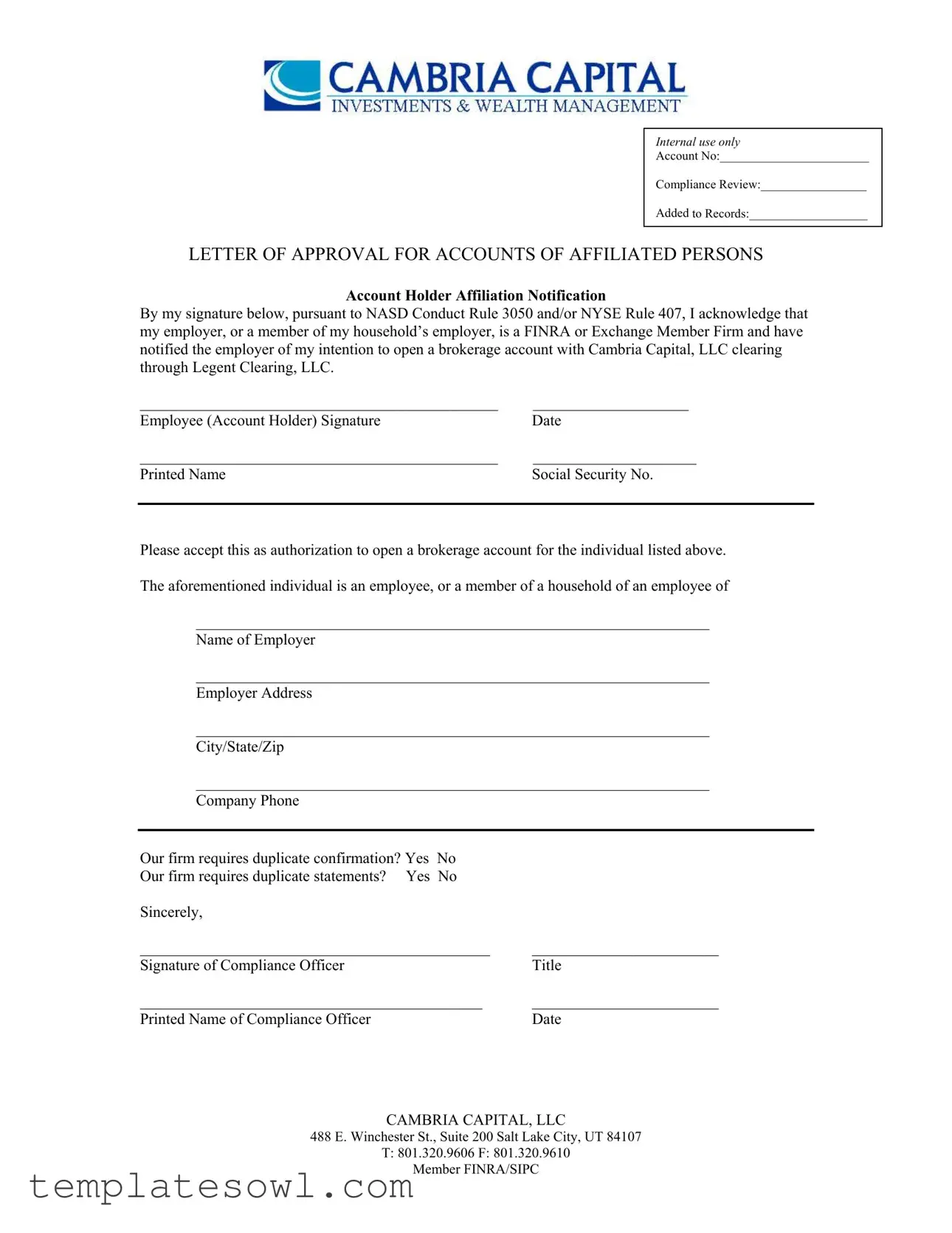Internal use only
Account No:________________________
Compliance Review:_________________
Added to Records:___________________
LETTER OF APPROVAL FOR ACCOUNTS OF AFFILIATED PERSONS
ACCOUNT HOLDER AFFILIATION NOTIFICATION
By my signature below, pursuant to NASD Conduct Rule 3050 and/or NYSE Rule 407, I acknowledge that my employer, or a member of my household’s employer, is a FINRA or Exchange Member Firm and have notified the employer of my intention to open a brokerage account with Cambria Capital, LLC clearing through Legent Clearing, LLC.
______________________________________________ |
____________________ |
Employee (Account Holder) Signature |
Date |
______________________________________________ |
_____________________ |
Printed Name |
Social Security No. |
|
|
Please accept this as authorization to open a brokerage account for the individual listed above.
The aforementioned individual is an employee, or a member of a household of an employee of
__________________________________________________________________
Name of Employer
__________________________________________________________________
Employer Address
__________________________________________________________________
City/State/Zip
__________________________________________________________________
Company Phone
Our firm requires duplicate confirmation? Yes |
No |
|
Our firm requires duplicate statements? Yes |
No |
|
Sincerely, |
|
|
_____________________________________________ |
________________________ |
Signature of Compliance Officer |
|
Title |
____________________________________________ |
________________________ |
Printed Name of Compliance Officer |
|
Date |
CAMBRIA CAPITAL, LLC
488 E. Winchester St., Suite 200 Salt Lake City, UT 84107
T:801.320.9606 F: 801.320.9610 Member FINRA/SIPC

